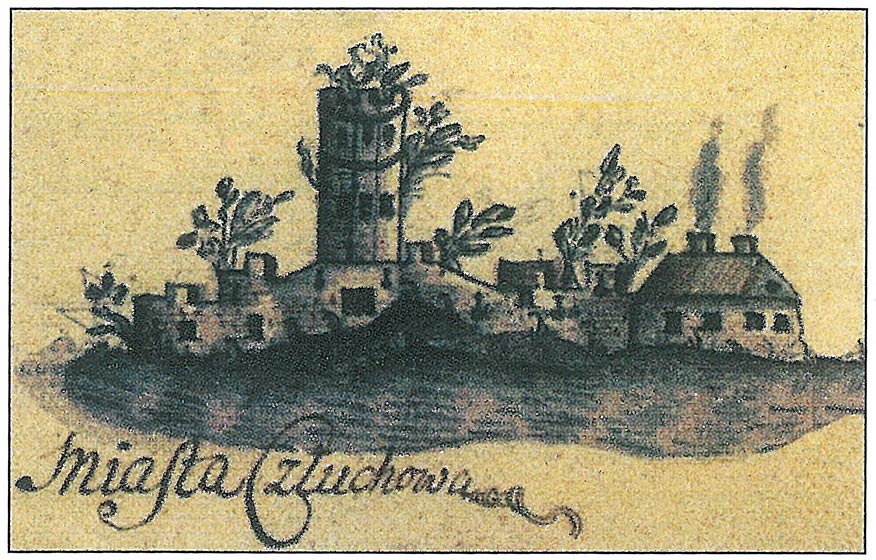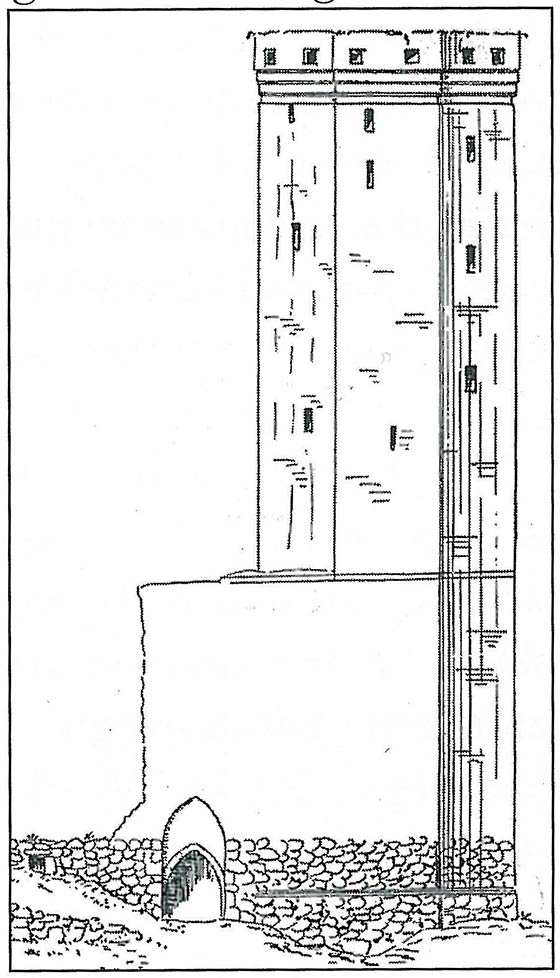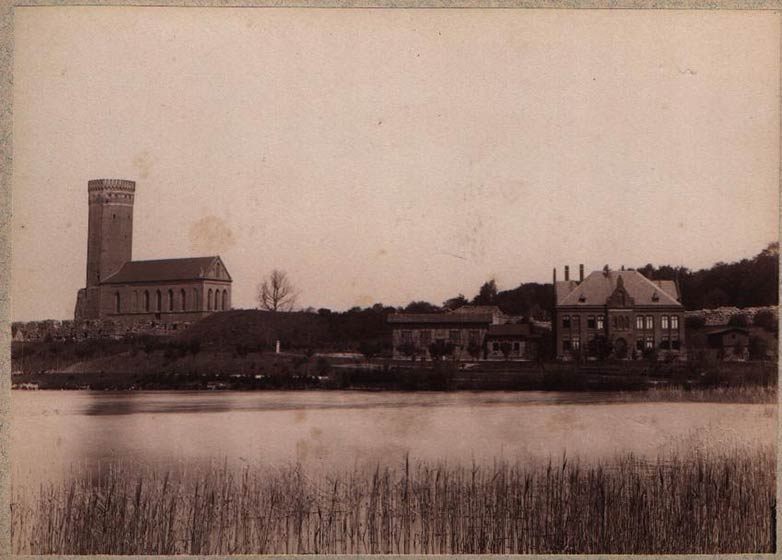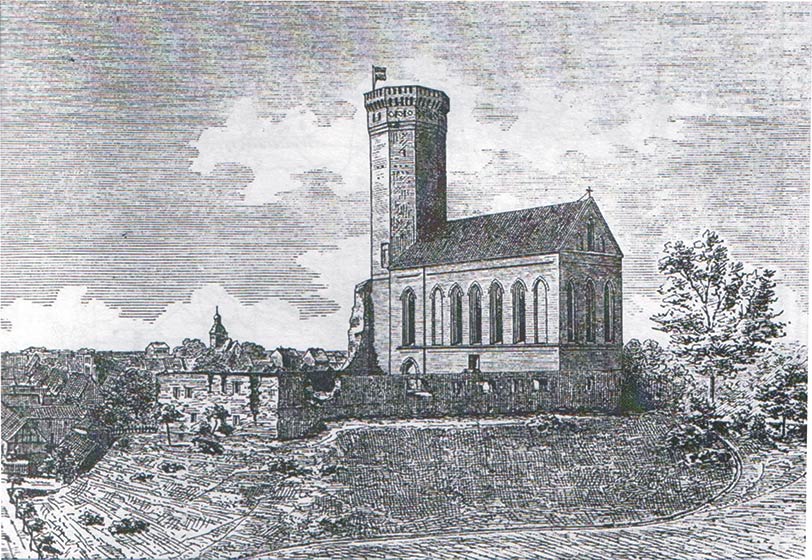Człuchów Castle was one of the largest defensive structures erected by knights of the Teutonic Order. It occupied an area of 3 hectares, and was second in size only to the Grand Master’s castle in Malbork, the seat of the Teutonic State. The castle in Człuchów comprised three outer baileys and the High Castle; each of them could act as a separate defensive unit if needed. The different parts of the castle were accessible across drawbridges constructed over water-filled moats; only the moat around Outer Bailey III was not filled with water.
Built on a square plan, with each side 47.5 m long, the four-wing High Castle was the most important part of the stronghold. Each wing was at least three storeys high, comprising the cellars, the low ground floor and the high storey located above, topped by the garret storey. Overlooking the other buildings was a huge eight-sided tower situated in the north-western corner of the High Castle. Entrances to the tower were located on the wing garret level. The north wing housed the chapel; the east wing housed the chapter room, where monks gathered for meetings; the south wing housed the dormitory, a shared bedroom for monks; and the west wing housed the refectory, where meals were taken. The cellars and higher storeys housed storerooms, armouries, the commander’s mill and, during the Polish period, a brewery. The buildings enclosed a square courtyard surrounded by galleries.
The vast size of Człuchów Castle was motivated by the important strategic and representative role it played in the Teutonic State. As part of the fortification system of the state’s southern border, it was an important defensive location. Moreover, it was located on a route used by guests of the order heading to the main Teutonic centres. Człuchów was where at least some of them witnessed the might of the Teutonic State for the first time. The construction of the castle began after 1312, when the order purchased Człuchów from sons of Mikołaj of Poniec (the last Polish castellan in Szczytno), and was probably completed around 1365. The settlement below the enormous stronghold developed quickly. On 19 June 1348, Człuchów was granted municipal rights. Its vast size was a result of the important strategic and representative role it played in the Teutonic State. As part of the fortification system on the southern border of the Teutonic territory, it was an important defence point in this part of the state. . In this period, the outer baileys housed stables, where horses were kept for knights of the order and their guests. The outer baileys also housed workshops, quarters for mercenaries, granaries and storehouses which made the castle independent in terms of provisioning and craft production. There was also a large arsenal of firearms and artillery, including cannonballs and a large number crossbows and bolts. The military significance of the castle was particularly felt throughout northern parts of Greater Poland and in Kuyavia, which were raided by the Teutonic knights led by the commander of Człuchów and Tuchola. They took military action against the Kingdom of Poland independently of the main Teutonic forces. In late February of 1454, at the beginning of the Thirteen Years’ War, the castle came under Polish command, and Człuchów became a royal town and the seat of the county office in 1466. For 300 years afterwards, the massive stronghold stood sentinel on the north-western border of Poland, which was just 20 km west of Człuchów. Towards the end of the First Polish Republic, it lost its strategic significance, and the castle buildings fell into disrepair.
1. Silhouette of the castle in the Człuchów Starostwo inventory record book from 1753
Following the fire of 1793, King Frederick William II allowed the residents to dismantle the castle and use the reclaimed bricks for rebuilding their burnt-down houses.
2. Picture of the castle tower, evangelical church and remnants of the castle walls, 1892
The enormous tower of the High Castle (46 m), which affords a view of the town and its surroundings, bears witness to the former glory of the fortress. In 1826–1828, an evangelical church was constructed on the foundations of the castle chapel, and the tower was converted into a belfry. In 1844, the crown of the tower was changed into high crenellations. To provide access for the bell-ringer and tourists, an entrance was knocked through at the bottom of the tower and a wooden stairway was constructed.
3. Picture of the castle tower, evangelical church and remnants of the castle walls, 1892
4. View of the evangelical church in the old High Castle in Człuchów, early 20th century
In 2008–2015, as part of a revitalisation project co-financed under the European Regional Development Fund, archaeological excavations and restoration works were carried out on the site of the castle compound.
Since 2 May 2013, the renovated castle has been administered by the Regional Museum in Człuchów.




